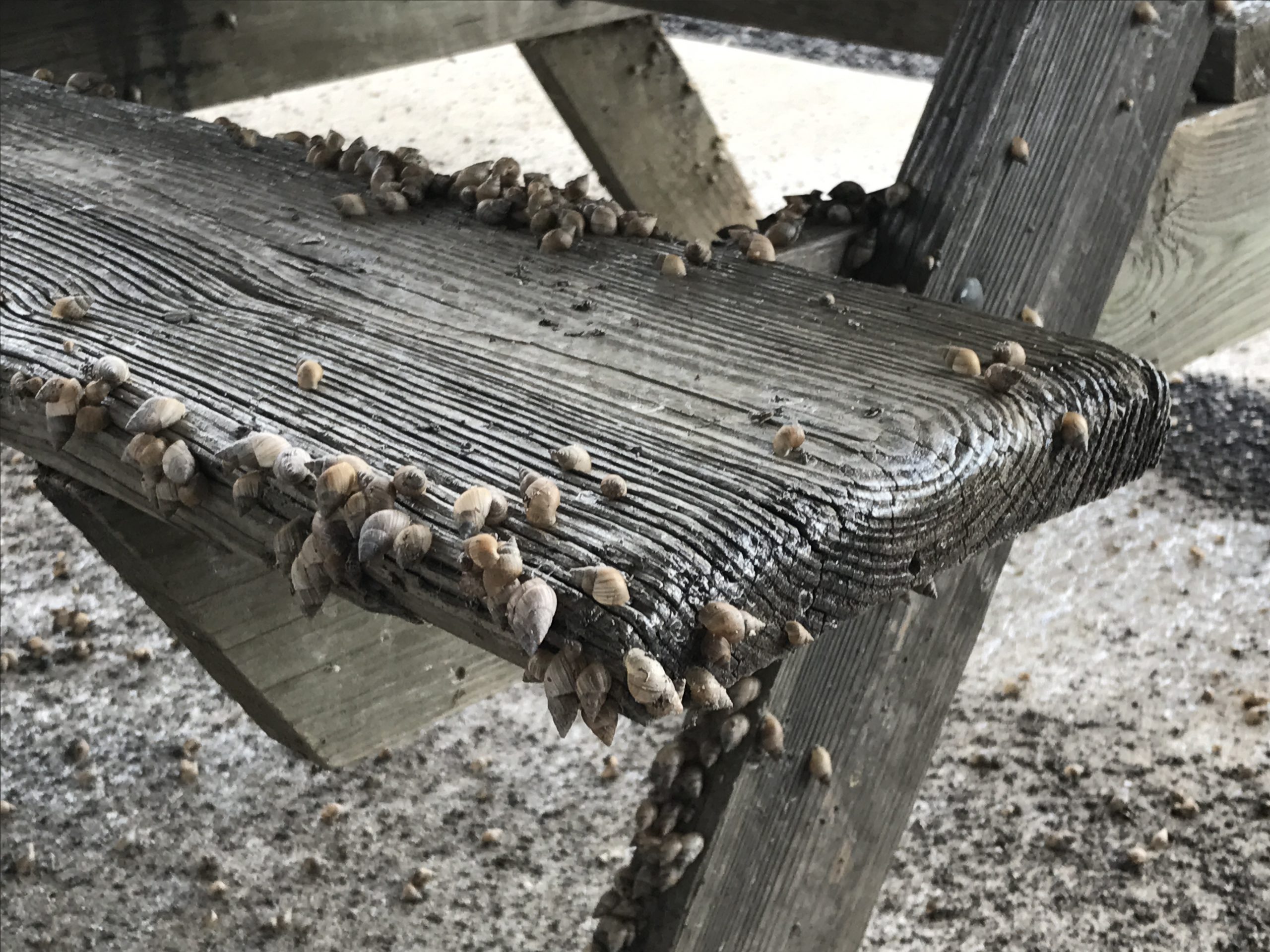EDRR Invasive Species
Land Snail (Bulimulus sporadicus)
Define Invasive Species: must have ALL of the following –
- Is non-native to the area, in our case northwest Florida
- Introduced by humans, whether intentional or accidental
- Causing either an environmental or economic problem, possibly both
Define EDRR Species: Early Detection Rapid Response. These are species that are either –
- Not currently in the area, in our case the Six Rivers CISMA, but a potential threat
- In the area but in small numbers and could be eradicated
Native Range:
Bulimulus sporadicus is native to the West Indies.
Introduction:
There appears to have been multiple points of entry into Florida. It was first identified in Florida by Dr. Harry G. Lee, who discovered the snail in Duval County in 2009. Additional surveys found four different populations all associated with the CSX railways. It is believed the snail was introduced via the railway cars coming from Mexico. Populations began to appear both north and south of the original location, all near the CSX railways. The animal has been reported from central and south Florida, as well Georgia, Alabama, Mississippi, and Northwest Florida.
EDDMapS currently list only 2 records of Bulimulus sporadicus. One in central and another in south Florida. There are no EDDMapS records of the snail in the Florida panhandle, but it has been reported in Pensacola and Panama City. There are no records within the Six Rivers CISMA but it is believed to be here. Records of this animal is certainly under reported.
Description:
This is a small (3/4 – 1”) land snail. It has a conical shell that is light brown to tan in color. They are often found near gardening areas and seem to like the high humidity and moist conditions here.
Issues and Impacts:
A 2018 publication from the Center for Invasive Species and Ecosystem Health noted that it was not designated as invasive in any state, nor the federal level. However, with the relatively new introduction and wide spread of this species it warrants observation.
Management:
There are no management plans for this snail at this time. Chemical treatment of plants to reply the snail are not recommended. It appears the snail prefers the leaf litter within the mulch rather than the live plants. Snail baits, and other pesticides, can be harmful to pets and native wildlife and are not recommended. They do like mulched areas within gardens and if the home owner is having a serious problem, management of this type of habitat may be needed.
For more information on this EDRR species, contact your local extension office.
References
Stauderman, K. 2020. A Snail That Rode the Rails. UF/IFAS Extensions Volusia County Blog. http://blogs.ifas.ufl.edu/volusiaco/2020/04/07/a-snail-that-rode-the-rails/.
Snail (Bulimulus sporadicus, O’Brigny 1835). 2018. Center for Invasive Species and Ecosystem Health. https://www.invasive.org/browse/subinfo.cfm?sub=78908.
Early Detection and Distribution Mapping System (EDDMapS)
Six Rivers CISMA
https://www.floridainvasives.org/sixrivers/
- Our Environment: Part 11 – We Need Water - July 7, 2025
- Our Environment: Part 10 – Improving Agriculture - June 20, 2025
- Marine Creatures of the Northern Gulf – Snails and Slugs - June 20, 2025

